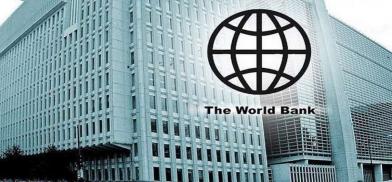India's economy shrunk 9.6% in 2020-21; South Asia‘s fell by 6.7%: World Bank
India's economy battered by the COVID-19 pandemic is forecast to crater by 9.6 per cent during the current financial year but can recover by 5.4 per cent next financial year if there is wide vaccination against the disease and it is contained, the World Bank said on Tuesday

India's economy battered by the COVID-19 pandemic is forecast to crater by 9.6 per cent during the current financial year but can recover by 5.4 per cent next financial year if there is wide vaccination against the disease and it is contained, the World Bank said on Tuesday.
The Bank's Global Economic Prospects Report said that the optimistic forecast for 2021-22 “assumes that a vaccine will be distributed on a large scale in the region starting the second half of 2021 and that there is no widespread resurgence in infections.”
About the economy's contraction, the report said, “In India, the pandemic hit the economy at a time when growth was already decelerating” and “the estimated contraction of the economy by 9.6 per cent during 2020-21 reflects “a sharp drop in household spending and private investment.”
Looking ahead, the report said that India's recovery would be constrained by the weak financial sector.
The 5.4 per cent growth rate forecast for in 2021-22 -- a “rebound from a low base” -- would be “offset by muted private investment growth given financial sector weaknesses,” the report said noting that “in the financial sector, non-performing loans were already high before the pandemic.”
In the South Asia region, the Bank said that the economy overall fell by 6.7 per cent in 2020 “reflecting the effects of the pandemic and nationwide lockdowns, particularly in Bangladesh and India.”
But it added, “Activity rebounded in the second half of last year, led by industrial production, as initial stringent lockdowns were eased.”
The global economy, which contracted by 4.3 per cent in 2020 is forecast to grow by 4 per cent next year if “an initial COVID-19 vaccine rollout becomes widespread throughout the year,” the report said.
The report warned that for the South Asia region, “Risks to the outlook are tilted to the downside.”
Besides severe and longer-lasting coronavirus infection rates, the other risks include “financial and debt distress caused by an abrupt tightening of financing conditions or possible widespread corporate bankruptcies.”
“Additional stress on domestic banks in the region could be triggered by the economic consequences of a more protracted recovery from the pandemic, which in turn could lead to a rise in bankruptcies and weaken the balance sheets of the banking and non-banking sectors,” it added.
China, from where the COVID-19 pandemic spread, is expected to see its economy grow by 7.9 per cent – the world's fastest – this year after contracting 2 per cent last year.









Post a Comment